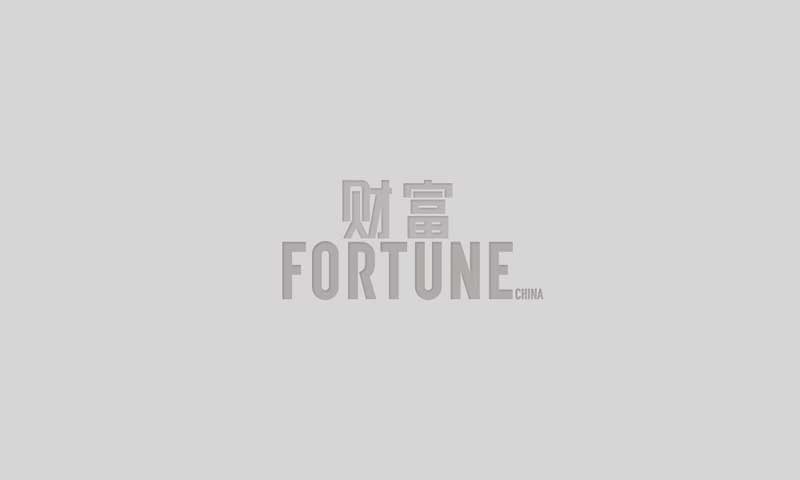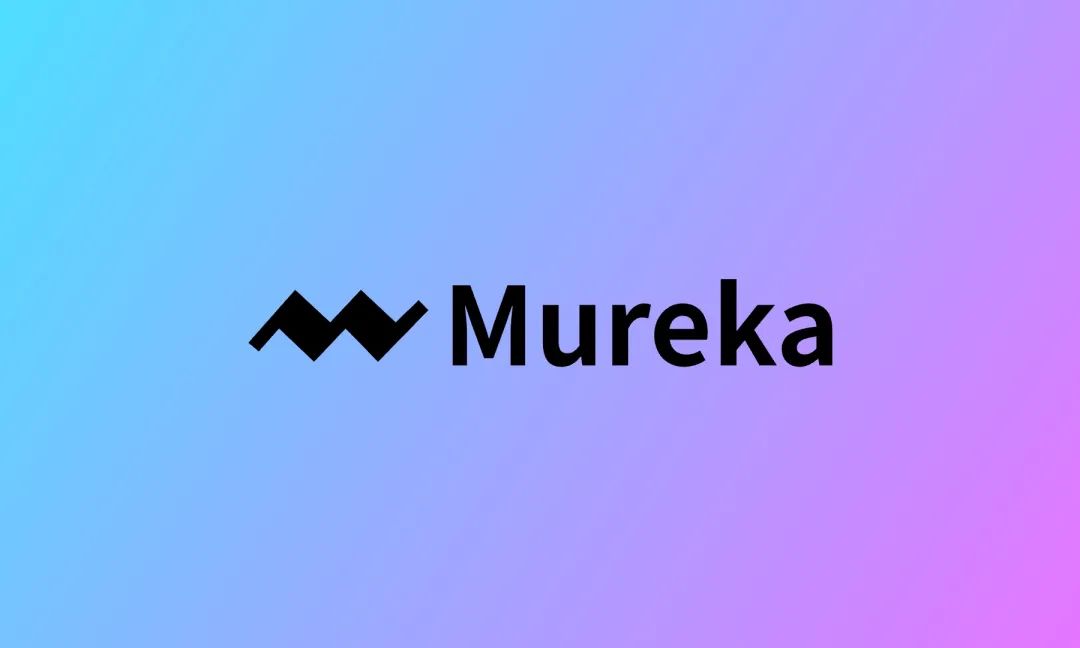
• 随着奢侈品仿品、减肥药和美容整形手术越来越普及,超级富豪们正在通过新的方式来彰显财富。如今,炫富的新方式已变成了新标准。
曾几何时,拥有一只爱马仕(Hermès)铂金包是检验超级富豪的试金石:购买这款手袋动辄要等待数年,标价高达令人咋舌的六位数,这让这款手袋成为终极奢侈品象征。直到沃尔玛(Walmart)开始以80美元(而非2.5万美元)的价格出售外观几乎一模一样的"平替"版本。
TikTok上的时尚爱好者迅速开始炒作该低价零售商的平价铂金包仿品,欢呼终于能够买到被1%超级富豪垄断的手袋。内容创作者批评那些对仿品嗤之以鼻的人,指出即使不是富翁,也同样有权利拥有这种时尚单品。沃尔玛铂金包等仿品让中产阶级接触到高端时尚——这向拉平社会阶层差距迈进了一步。
《真实:在仿冒文化中重拾现实》(Authenticity: Reclaiming Reality in a Counterfeit Culture)一书的作者爱丽丝·舍伍德接受《连线》采访时表示:“购买这类仿品带来的羞耻感已经消失。奢侈品牌价格飙升的同时,时尚周期却在急速缩短。人们不再愿意为可能一年内就过时的最新‘爆款’包包花费数千美元。”
沃尔玛铂金包不过是充斥市场的众多奢侈品仿品之一。从限量版乔丹(Jordan)运动鞋、运河街上兜售的仿品包包到高端护发产品,任何商品或品牌都难逃出现廉价仿品的命运。奢侈生活方式的其他元素也变得更加触手可及。拥有透亮肌肤、对称面容和苗条身材的“健康美”,变成了新的财富象征。但随着司美格鲁肽(Ozempic)减肥针和低价医美项目的普及,不同收入阶层人群也能实现这种美。
近年来,上层阶级对奢侈品牌日渐冷淡——中国消费者尤甚。高级时装价格不断攀升,但成本上涨并未带来创新或品质提升。当新冠疫情来袭、人们钱包缩水时,愿意为失去吸引力的商品买单的人越来越少。
如今,超级富豪摒弃了传统的奢侈标准,开始通过新方式彰显身份。
超级富豪的抵制和顶尖富豪的新身份象征
上层阶级以更具创意的方式炫耀财富,这些方式有时与公开的消费行为无关。隐私、休闲活动、新奇物品和自我表达已经成为成功的新象征。关键不在于是否有钱购买物品,而在于是否有能力摆脱生计奔波,依然稳操胜券。
隐私和断网
品牌策略顾问兼TikTok内容创作者(超过11.5万粉丝)尤金·希利在一条视频中探讨了他的理论。其中一种理论是,隐私和断网将成为身份地位的象征。希利在视频中解释称,随着越来越多的人每天陷入滚动信息的反馈循环中,断网成了一种新的炫耀方式。如果一个人依然知道所有潮流餐厅和品牌,但这些信息并非来自网络,那就说明他们真正身处富裕阶层。他们不需要搜索最好的鸡尾酒吧——他们所在的收入阶层是这些热门地点的常客。
希利在视频中说道:“长期离线是一种新的炫耀方式。”
休闲时间与活动
超级富豪的另外一个身份象征是,拥有选择如何度过休闲时间的自由。上层阶级享受闲暇时光,这与许多同时打几份工的中产阶级工人形成鲜明对比。希利表示,生活无忧表明富人没有其他人所面临的典型经济压力——学者们也对此进行了探讨。
哥伦比亚商学院(Columbia Business School)商业专业副教授西尔维亚·贝莱扎发现,休闲活动可以代表身份地位。在2023年的研究中,她表示,主动或被动的休闲活动与财富表达之间存在联系。一个人选择如何度过闲暇时间与他们的社会认知相关——贝莱扎发现,即使在休息时间,富人也“常常使用体力或脑力来追求身心健康和个人发展”。这可能包括在乡村俱乐部打壁球;阅读创业书籍和励志图书;烘焙无防腐剂的新鲜面包等。
造型新颖、彰显个性的服装
超级富豪之所以不再追求将奢侈品作为身份的象征,最重要的原因之一是这些高端品牌没有兑现它们的承诺,这使得曾经的客户纷纷开始转向能代表其身份的新物品。据贝恩公司(Bain & Company)去年发布的一份报告显示,2022年至2024年期间,全球奢侈品市场流失了5,000万消费者。中国消费者一度被认为将是奢侈品市场的下一个消费主力,但他们在疫情封控期间纷纷放弃了购买奢侈品。随着消费者对平淡无奇的昂贵商品感到厌倦,迪奥(Dior)、雅诗兰黛(Estée Lauder)、路易威登(Louis Vuitton)和博柏利(Burberry)等品牌遭受重创。
专注于奢侈品零售业的股票分析师玛丽·德里斯科尔对《财富》杂志表示:“自2019年起,奢侈品大幅涨价,却没有相应地提高奢侈品牌应有的创新能力、服务水平、品质或吸引力。在2024年,这种情况真正影响到消费者,我们已经感受到了全面冲击。”
因此,贝莱扎预测,符合消费者自我表达或可持续发展价值观的新颖服装,将成为新的“潮流”商品。购买一只普拉达(Prada)包包或者Jimmy Choo高跟鞋,并不能彰显消费者的个性。由于仿品泛滥,且服装乏善可陈,自我表达将成为新的趋势。
面对这种趋势,博柏利推出了个性化中心,专注于以客户姓名首字母作为徽标的奢侈品,而路易威登最近一改经典的棕色皮革风格,采用了更丰富多彩的款式。
看起来富有变得比以往更容易
在萨克斯第五大道(Saks Fifth Avenue)的橱窗前展开幻想的日子已经一去不复返。就连中产阶级消费者现在也能以更低的价格买到同款。
多年来,平替仿品已经成为一个巨大的市场。许多快时尚零售商意识到,中产阶级对富人的着装有着永不满足的渴望,这个行业变成了谁能更快推出平替仿品的“饥饿游戏”。这种对低价时尚的需求与消费主义和"立即购买"心态的兴起相契合。人们看到一件商品就想立刻拥有;喜欢某位名人的穿着,就会当场买下它的廉价仿品。
在平价仿品兴起之后,超级富豪们将财富的新标准转向了健康和美感。无论是40美元的普拉提课、家庭静脉注射、丰唇、有机农产品还是减肥药,名人和1%的超级富豪们都吹捧他们逆转生物钟的各种方法。苗条的身材表明一个人更自律,或者能够获得健康食品和精品健身会员资格。年轻的外貌是另一个标志——但后来中产阶级也能做面部拉皮手术,用上了Wegovy减肥药。需求的增加、竞争的加剧和保险覆盖范围的扩大压低了价格;司美格鲁肽自2017年进入美国市场以来,至2024年其净价格下降了40%。
超级富豪的身份象征通常与外表有关。但随着美容、护肤、整容和时尚的普及,新的成功标志更偏向于行为。由于奢侈品牌无法抓住顾客的注意力,越来越多的人开始转向抽象的替代品。(财富中文网)
译者:刘进龙
审校:汪皓
• 随着奢侈品仿品、减肥药和美容整形手术越来越普及,超级富豪们正在通过新的方式来彰显财富。如今,炫富的新方式已变成了新标准。
曾几何时,拥有一只爱马仕(Hermès)铂金包是检验超级富豪的试金石:购买这款手袋动辄要等待数年,标价高达令人咋舌的六位数,这让这款手袋成为终极奢侈品象征。直到沃尔玛(Walmart)开始以80美元(而非2.5万美元)的价格出售外观几乎一模一样的"平替"版本。
TikTok上的时尚爱好者迅速开始炒作该低价零售商的平价铂金包仿品,欢呼终于能够买到被1%超级富豪垄断的手袋。内容创作者批评那些对仿品嗤之以鼻的人,指出即使不是富翁,也同样有权利拥有这种时尚单品。沃尔玛铂金包等仿品让中产阶级接触到高端时尚——这向拉平社会阶层差距迈进了一步。
《真实:在仿冒文化中重拾现实》(Authenticity: Reclaiming Reality in a Counterfeit Culture)一书的作者爱丽丝·舍伍德接受《连线》采访时表示:“购买这类仿品带来的羞耻感已经消失。奢侈品牌价格飙升的同时,时尚周期却在急速缩短。人们不再愿意为可能一年内就过时的最新‘爆款’包包花费数千美元。”
沃尔玛铂金包不过是充斥市场的众多奢侈品仿品之一。从限量版乔丹(Jordan)运动鞋、运河街上兜售的仿品包包到高端护发产品,任何商品或品牌都难逃出现廉价仿品的命运。奢侈生活方式的其他元素也变得更加触手可及。拥有透亮肌肤、对称面容和苗条身材的“健康美”,变成了新的财富象征。但随着司美格鲁肽(Ozempic)减肥针和低价医美项目的普及,不同收入阶层人群也能实现这种美。
近年来,上层阶级对奢侈品牌日渐冷淡——中国消费者尤甚。高级时装价格不断攀升,但成本上涨并未带来创新或品质提升。当新冠疫情来袭、人们钱包缩水时,愿意为失去吸引力的商品买单的人越来越少。
如今,超级富豪摒弃了传统的奢侈标准,开始通过新方式彰显身份。
超级富豪的抵制和顶尖富豪的新身份象征
上层阶级以更具创意的方式炫耀财富,这些方式有时与公开的消费行为无关。隐私、休闲活动、新奇物品和自我表达已经成为成功的新象征。关键不在于是否有钱购买物品,而在于是否有能力摆脱生计奔波,依然稳操胜券。
隐私和断网
品牌策略顾问兼TikTok内容创作者(超过11.5万粉丝)尤金·希利在一条视频中探讨了他的理论。其中一种理论是,隐私和断网将成为身份地位的象征。希利在视频中解释称,随着越来越多的人每天陷入滚动信息的反馈循环中,断网成了一种新的炫耀方式。如果一个人依然知道所有潮流餐厅和品牌,但这些信息并非来自网络,那就说明他们真正身处富裕阶层。他们不需要搜索最好的鸡尾酒吧——他们所在的收入阶层是这些热门地点的常客。
希利在视频中说道:“长期离线是一种新的炫耀方式。”
休闲时间与活动
超级富豪的另外一个身份象征是,拥有选择如何度过休闲时间的自由。上层阶级享受闲暇时光,这与许多同时打几份工的中产阶级工人形成鲜明对比。希利表示,生活无忧表明富人没有其他人所面临的典型经济压力——学者们也对此进行了探讨。
哥伦比亚商学院(Columbia Business School)商业专业副教授西尔维亚·贝莱扎发现,休闲活动可以代表身份地位。在2023年的研究中,她表示,主动或被动的休闲活动与财富表达之间存在联系。一个人选择如何度过闲暇时间与他们的社会认知相关——贝莱扎发现,即使在休息时间,富人也“常常使用体力或脑力来追求身心健康和个人发展”。这可能包括在乡村俱乐部打壁球;阅读创业书籍和励志图书;烘焙无防腐剂的新鲜面包等。
造型新颖、彰显个性的服装
超级富豪之所以不再追求将奢侈品作为身份的象征,最重要的原因之一是这些高端品牌没有兑现它们的承诺,这使得曾经的客户纷纷开始转向能代表其身份的新物品。据贝恩公司(Bain & Company)去年发布的一份报告显示,2022年至2024年期间,全球奢侈品市场流失了5,000万消费者。中国消费者一度被认为将是奢侈品市场的下一个消费主力,但他们在疫情封控期间纷纷放弃了购买奢侈品。随着消费者对平淡无奇的昂贵商品感到厌倦,迪奥(Dior)、雅诗兰黛(Estée Lauder)、路易威登(Louis Vuitton)和博柏利(Burberry)等品牌遭受重创。
专注于奢侈品零售业的股票分析师玛丽·德里斯科尔对《财富》杂志表示:“自2019年起,奢侈品大幅涨价,却没有相应地提高奢侈品牌应有的创新能力、服务水平、品质或吸引力。在2024年,这种情况真正影响到消费者,我们已经感受到了全面冲击。”
因此,贝莱扎预测,符合消费者自我表达或可持续发展价值观的新颖服装,将成为新的“潮流”商品。购买一只普拉达(Prada)包包或者Jimmy Choo高跟鞋,并不能彰显消费者的个性。由于仿品泛滥,且服装乏善可陈,自我表达将成为新的趋势。
面对这种趋势,博柏利推出了个性化中心,专注于以客户姓名首字母作为徽标的奢侈品,而路易威登最近一改经典的棕色皮革风格,采用了更丰富多彩的款式。
看起来富有变得比以往更容易
在萨克斯第五大道(Saks Fifth Avenue)的橱窗前展开幻想的日子已经一去不复返。就连中产阶级消费者现在也能以更低的价格买到同款。
多年来,平替仿品已经成为一个巨大的市场。许多快时尚零售商意识到,中产阶级对富人的着装有着永不满足的渴望,这个行业变成了谁能更快推出平替仿品的“饥饿游戏”。这种对低价时尚的需求与消费主义和"立即购买"心态的兴起相契合。人们看到一件商品就想立刻拥有;喜欢某位名人的穿着,就会当场买下它的廉价仿品。
在平价仿品兴起之后,超级富豪们将财富的新标准转向了健康和美感。无论是40美元的普拉提课、家庭静脉注射、丰唇、有机农产品还是减肥药,名人和1%的超级富豪们都吹捧他们逆转生物钟的各种方法。苗条的身材表明一个人更自律,或者能够获得健康食品和精品健身会员资格。年轻的外貌是另一个标志——但后来中产阶级也能做面部拉皮手术,用上了Wegovy减肥药。需求的增加、竞争的加剧和保险覆盖范围的扩大压低了价格;司美格鲁肽自2017年进入美国市场以来,至2024年其净价格下降了40%。
超级富豪的身份象征通常与外表有关。但随着美容、护肤、整容和时尚的普及,新的成功标志更偏向于行为。由于奢侈品牌无法抓住顾客的注意力,越来越多的人开始转向抽象的替代品。(财富中文网)
译者:刘进龙
审校:汪皓
• The ultra-rich are turning to new ways to signal wealth as luxury dupes, weight-loss drugs, and cosmetic procedures become more accessible to the general public. Now, new ways of flaunting wealth have become the new standard.
Having a Hermès Birkin was once the litmus test for being extremely wealthy: with years-long waitlists, and eye-boggling price tags, the purse was the ultimate symbol of luxury. Until Walmart started selling an aesthetically identical version for $80 instead of $25,000.
Fashion lovers on TikTok were quick to hype up the low-price retailer’s affordable Birkin dupe, celebrating that they finally had access to the bag gate-kept by the 1%. Content creators criticized those turning their noses up at knock-offs, saying that non-rich people still deserve to own the style. Dupes such as the Walmart Birken brought high fashion to the middle class—it was one step closer to leveling the playing field.
“The shame of buying these things has gone,” Alice Sherwood, author of Authenticity: Reclaiming Reality in a Counterfeit Culture, told WIRED. “Luxury prices have skyrocketed while the trend cycle has rapidly accelerated. People no longer want to spend upwards of [thousands] on the latest ‘It’ bag that might be out of vogue within a year.”
The Walmart Birkin is just one of many luxury product knock-offs flooding the market. No item or brand is impervious from cheap imitation—from specialty Jordan sneakers, to the purse dupes sold on Canal Street, to high-end hair care. Other elements of a luxury lifestyle have become more accessible, too. Looking “healthy” or aesthetically pleasing—with clear skin, a symmetrical face, and slim-fit body—became the new signifier of wealth. But with the rise of Ozempic and lower-cost cosmetic procedures, that’s no longer out of reach for people in different tax brackets, either.
The upper-class has also given luxury brands the cold shoulder in recent years—especially Chinese consumers. High-fashion products are getting more expensive, but that cost increase hasn’t correlated with a rise in innovation or quality. And when the COVID-19 pandemic hit and wallets were squeezed, less people were shelling out for things that were no longer enthralling.
Now ultra-rich have ditched their old standards of luxury, and are signaling their status in new ways.
The ultra-rich resistance and new status symbols for the 1%
The upper-class are flashing their funds in more creative ways that in some cases, have nothing to do with overt spending. Privacy, leisure activities, novel items, and expressing oneself have become new touchpoints of prosperity. It’s not about having the money to afford an item, it’s about having the means to ditch hustle culture and getting ahead.
Privacy and unplugging
Eugene Healey, a brand strategy consultant and TikTok content creator with over 115,000 followers on the platform, delved into a few of his theories in a video. One is that privacy and being detached from the internet will become a status symbol. In the video Healy explained that as more people are trapped in a chronic feedback loop scrolling their days away, it’s a flex to unplug. And when someone still knows all the cool restaurants and stylish brands, but didn’t find them online, then they show their genuine proximity to wealth. They don’t need to search for the best cocktail bars—they exist in a tax bracket that already frequents the trendy spots.
“Being chronically offline is the new flex,” Healey said in the video.
Leisure time and activities
Another marker of the 1% is having the luxury to choose how to spend their downtime. The upper-class enjoying their leisure time is in stark contrast to the many middle-class workers holding down several jobs at once. Healey said that leading an effortless existence signals the rich don’t have the typical financial constraints others do—and academics are weighing in, too.
Silvia Bellezza, an associate professor of business at Columbia Business School, found that leisure activities can denote status. In her 2023 study, she said that there is a connection between active or passive downtime pursuits, and wealth expression. How one chooses to spend their free hours is tied to their social perception—and Bellezza has found that even in off-hours, rich individuals are “often using physical or mental energy to pursue wellness, health, and personal development.” This could entail playing pickleball at a country club; reading entrepreneurial and self-help books; baking fresh bread without preservatives.
Novel and expressive clothing
One of the biggest reasons why the ultra-rich is resisting boujee status symbols is because high-end brands are falling short on their promises—which has one-time customers turning to new physical indicators. 50 million luxury consumers exited the market between 2022 and 2024, according to a report published last year from Bain & Company. Chinese buyers—once considered to be the next cohort of luxe shoppers—also jumped ship during lockdown. Brands like Dior, Estée Lauder, Louis Vuitton, and Burberry took a huge hit as customers grew fed-up with expensive items they found uninspiring.
“Since 2019, there’s been a high price increase across luxury without a corresponding increase in innovation, service, quality, or appeal that a luxury brand should provide,” Marie Driscoll, an equity analyst focused on luxury retail, told Fortune. “This year [2024], that really hit consumers, and we felt the full impact.”
Because of this, Bellezza predicted that novel clothing items that reflect the buyer’s self-expression or values of sustainability will be the new “it” items. Buying a Prada bag or Jimmy Choo heels says nothing personal about the consumer. And since knock-offs are so accessible and clothing has become uninspiring, signaling self will be the next frontier.
Burberry has responded to this trend with a personalization hub focused on monogramming luxury items with a customers’ initials, while Louis Vuitton has recently leaned into more colorful styles than its classic brown leather look.
Looking rich is more accessible than ever
Gone are the days of daydreaming in front of Saks Fifth Avenue displays. Even middle-class consumers can now steal the looks for less.
Dupes have become a huge market over the years. Many fast-fashion retailers recognized the middle class’ insatiable appetite for clothing items worn by the affluent, and the industry became the Hunger Games for who could push out dupes faster. This demand for low-price fashion coincided with a rise in consumerism and “buy now” mentality. People see an item and want it immediately; loving something their favorite celebrity wore, they buy a cheap imitation version of it on the spot.
After the rise of affordable knock-offs, the ultra-rich then moved the goalpost to a new standard of wealth: health and aesthetic beauty. Whether that be investing in $40 Pilates classes, at-home IV drips, lip filler, organic produce, or weight-loss drugs, celebrities and the 1% touted all the ways they were reversing the biological clock. Being slim signaled that one had more “self control,” or had access to healthy foods and boutique workout memberships. Looking youthful was another signifier—but then the middle-class got a hold of face-lifts and Wegovy. Increased demand, competition, and expanded insurance coverage have driven prices down; the net price of Ozempic in the U.S. declined 40% between 2024 and 2017, when it was first introduced to the American market.
The status symbols of the 1% have typically revolved around appearance. But with the democratization of beauty, skincare, cosmetic enhancements, and fashion, new emblems of success are a bit more behavioral. And as luxury brands have failed to hold the attention of their customers, more are turning to the abstract alternates.





